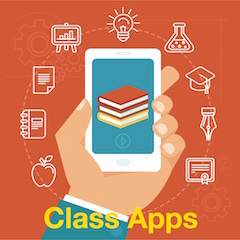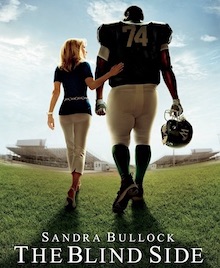Other Ways for Kids to Show What They Know
A MiddleWeb Blog

Inevitably, I would throw my hands in the air, stomp around the yard, yelling about the decrepit mower and my stingy father. Eventually, he would come out of the garage, and our weekly ritual would begin:
Dad: Did you fill it with gas?
Me: Of course.
Dad: Did you check the oil?
Me: Yup.
Dad: Did you make sure there was no grass stuck in it?
Me: Yeah! I can’t get it to start. It’s broken!
He would nod, give the string a quick, powerful pull, and the mower would roar to life. I would always frown in disgust and begin cutting the grass…grumbling under my breath and hoping the engine didn’t stall. Easy for him. Hard for me.
Sparks, But No Fire
A decade and a half later, I found myself on the other side of a similar struggle: watching my students battle to get their thoughts typed out or written down on paper.
They would scrunch their faces in concentration, get a few words down, only to sigh and erase/delete what they had so painfully constructed. It was like watching someone trying to start a fire by banging two rocks together. Every now and then there would be a spark, but nothing caught.
In an effort to help them get unstuck, I would prompt, prod, and offer suggestions. We reviewed strategies, our purpose for writing, our intended audience…nothing seemed to help.
This situation arose most often when students were asked to respond to higher-order, open-ended questions. Some of my middle schoolers simply couldn’t express what I was pretty sure they knew.
Finding Another Way
It didn’t take me too long to realize that, for quite a few students, writing itself might be the problem. I simply had too many kiddos with powerful insights and ideas that seemed to vaporize the moment they were asked to put them down on paper.
So…in learning activities/assessments where writing was NOT the primary focus, I started looking for other ways for my students to share what they knew.
I wish I could say that I did it because I had read a heap of research on the benefits of “varying the format of student response activities to engage struggling learners and activate prior knowledge.”

As his teachers found other ways for him to show what he knew, Michael ended up doing much better in school, went on to be a successful collegiate athlete, and eventually won the Super Bowl.
(By the way, I read Michael Oher’s REAL autobiography, and the oral response thing was one of a handful of things the movie actually got right.)
Getting Students to Write Talk About What They Know
Just to be clear…I am firmly convinced that the ability to write clearly and effectively is an essential skill for all students to develop. Sometimes, however, writing is like a prickly hedge that we inadvertently plant around students…preventing them from being able to fully reach out and share their true level of understanding with us.
It’s worth noting that non-written response, verbal participation, and even oral exams often tend to be more student-friendly, engaging, and/or provide a richer, more accurate picture of students’ thinking across different domains than written tests do (Sayre, 2014). These activities might include…
► Response cards with predetermined answers for students to choose from when a teacher offers a prompt, eliminating the need for verbal or written responding. Response cards can be multiple choice, true–false or more content-specific (like vocabulary words).
Digital tools like Plickers, for instance, allow students to respond to questions posed by the teacher by holding up their own, unique paper card in one of four ways to indicate a response of A, B, C, or D. Next, the teacher’s device scans the room, reading and tallying all student responses in a few seconds.
► Choral responding, or whole-group responding, is an instructional technique where the teacher poses a question that all students verbally answer in unison. Though this approach makes it challenging to track individual students’ accuracy, it provides students a chance to respond to every question, rather than just one or two during the lesson.
► Playing ‘Next Question’ is a fun, engaging way to get students talking with each other about what they know (and don’t know) about a particular topic or concept. Teachers work to develop a variety of questions at various levels of Bloom’s Taxonomy for students to review and discuss in groups. See HERE for an example.
Each question is written on a separate strip of paper and placed in the middle of the group. Each group member takes a turn picking a question, doing their best to answer it out loud, and then asks other group members for help if needed.
The same activity can be done digitally with a single laptop or Chromebook for each group using a random question generator like THIS ONE from WordWall that lets each student spin the wheel. Teachers can create up to 50 questions using text, pictures or both.
Oral Examinations in Middle Schools?!
Typically when we hear the phrase “oral exam,” we think of someone finishing up their pre-law program, defending a college dissertation…or even worse…a trip to the dentist. Case in point: I recently read about how, during the pandemic, Townsend University and US Air Force Academy decided to start using online, oral exams due to the pedagogical benefits they offer. Specifically, they mentioned:
- The ability to observe thought processes of students
- Insight into learners’ problem-solving ability
- Positive teacher-student interactions
- A more personalized distance education experience for students
But oral assessments are also proving useful in middle schools in the form of…
► Class presentations/demonstrations given after a particular learning lesson or event in order to show knowledge of essential skills and content using digital presentation tools like Emaze, Sway, and Google Slides. One of my favorite tools is the Google Cast Chrome extensions that allow any student in the room to share their screen with the whole class.
► Interviews/conferences with the teacher and/or presentations of digital portfolios created with tools like Showcase and Seesaw.
► Q & A sessions where students are given a list of topics/questions in advance to prepare, and then randomly assigned 3-5 to answer from home using a simple recording tool such as Loom, Screencast O’Matic or something similar. Doing so reduces the anxiety often associated with having to speak live in front of others. To see a 5th grade example, watch the video below.
Listening to Our Students
There will always be lessons and learning objectives that call for written responses. But if we aren’t careful, we’ll end up turning our assignments into tests of writing skills – rather than inquiries we design to successfully gauge their understanding of content area knowledge and processes.
There are so many ways we can help our students communicate what they’ve learned. I’ve shared some of my current favorites. What are some of yours?
Edutopia has republished portions of this article.





































The random question generator tool that was used to randomly assign students a question is free for use from WordWall. https://wordwall.net/resource/2858713/random-question-generator
The students recorded their videos with loom. https://www.loom.com/blog/free-for-teachers
It was interesting that, from the 5th grade example provided above, we can tell that the student has a relative understanding of the concepts/vocabulary, however… getting students to talk “more,” rather than less…i.e…further explanation/justification of answers allows us to better understand the depth of knowledge and identify misconceptions.
I appreciate this article very much. It will help inspire some new brainstorming for my special needs kiddo. We have virtual learning (since before COVID) and the teachers have always complained they can’t test her well because of non-verbalizing and a lack of other skills vs her age group. We need more out-of-the-box ideas like this to start offering more beneficial forms of testing (beyond what is typical).